Abstract
Since the earliest days of disinfectant testing bacteriostatic effect has misled many workers in this field. This problem has long been appreciated by some and a considerable battery of neutralizers has been employed, often with great success. Other anti-bacteriostatic measures, used without control, fail to revive damaged though viable organisms.
This paper sets out to describe some of the problems that are encountered in this confused field and the means whereby they may be overcome.
Full text
PDF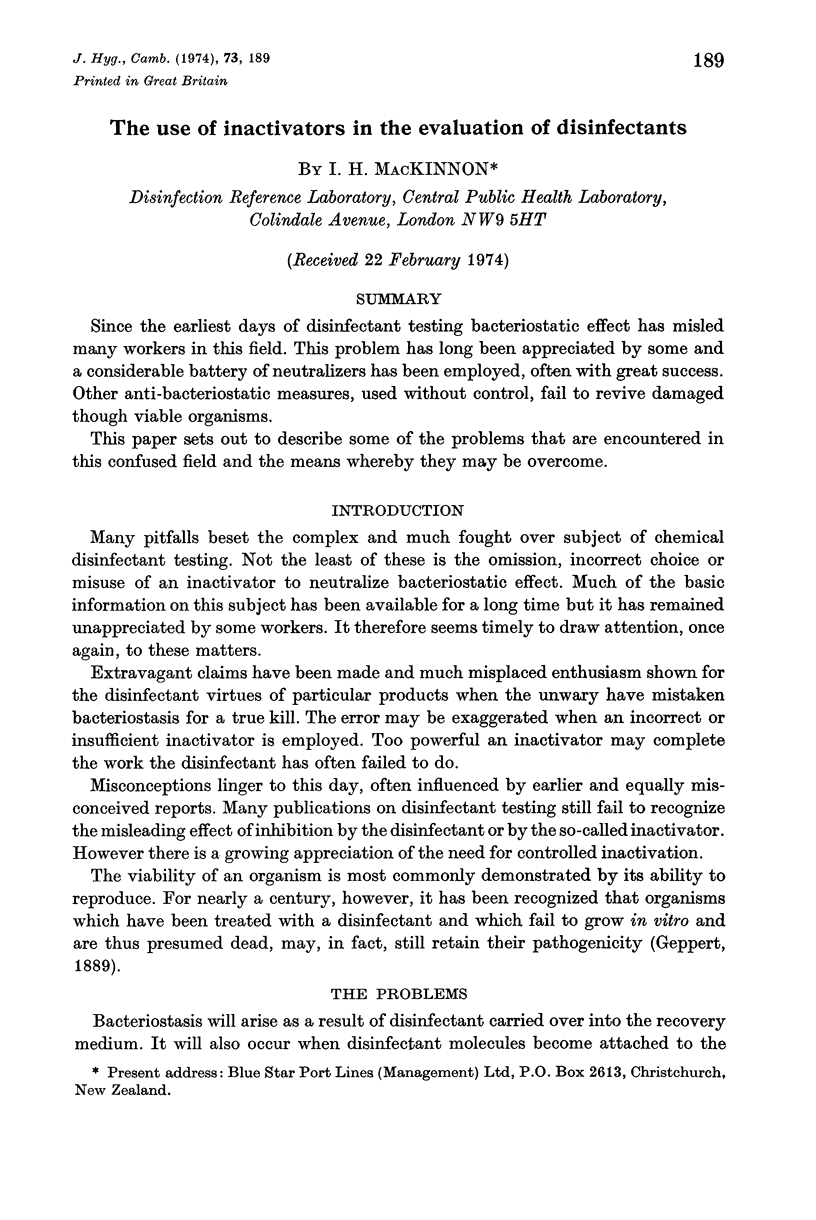
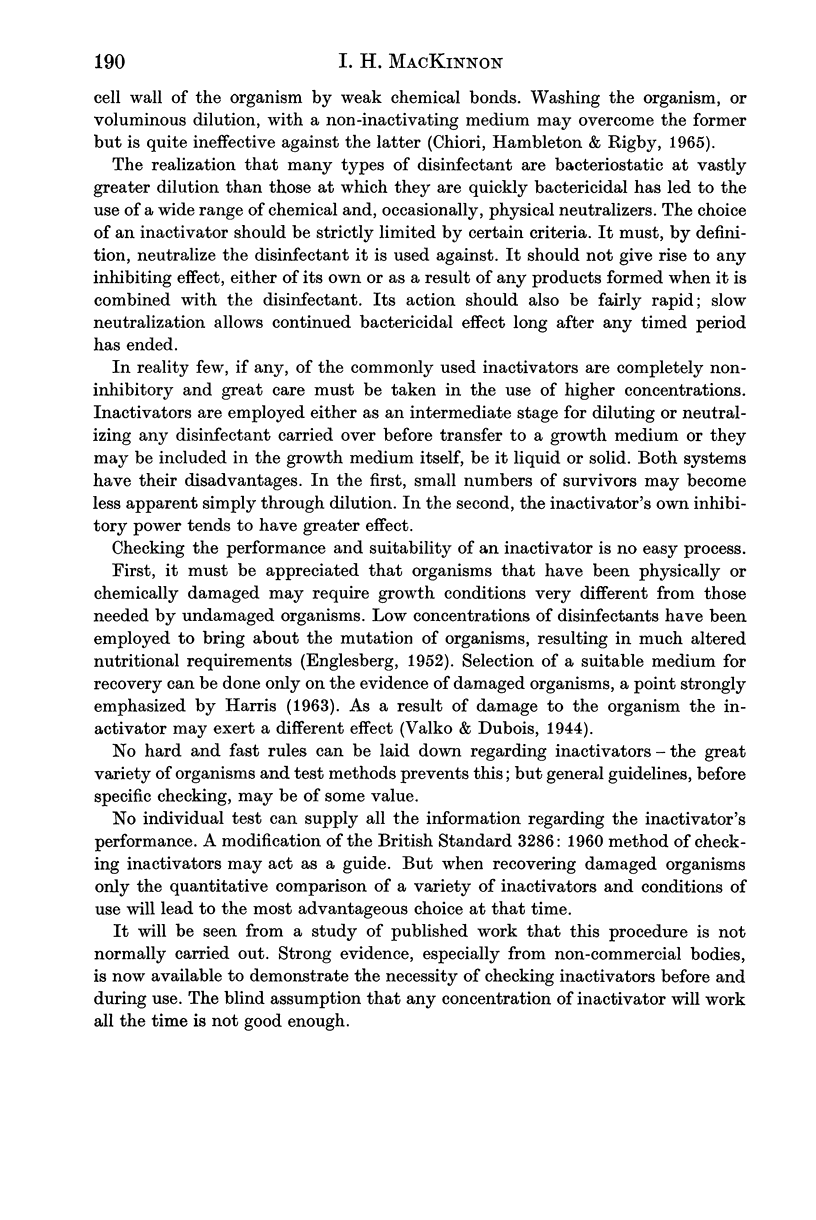
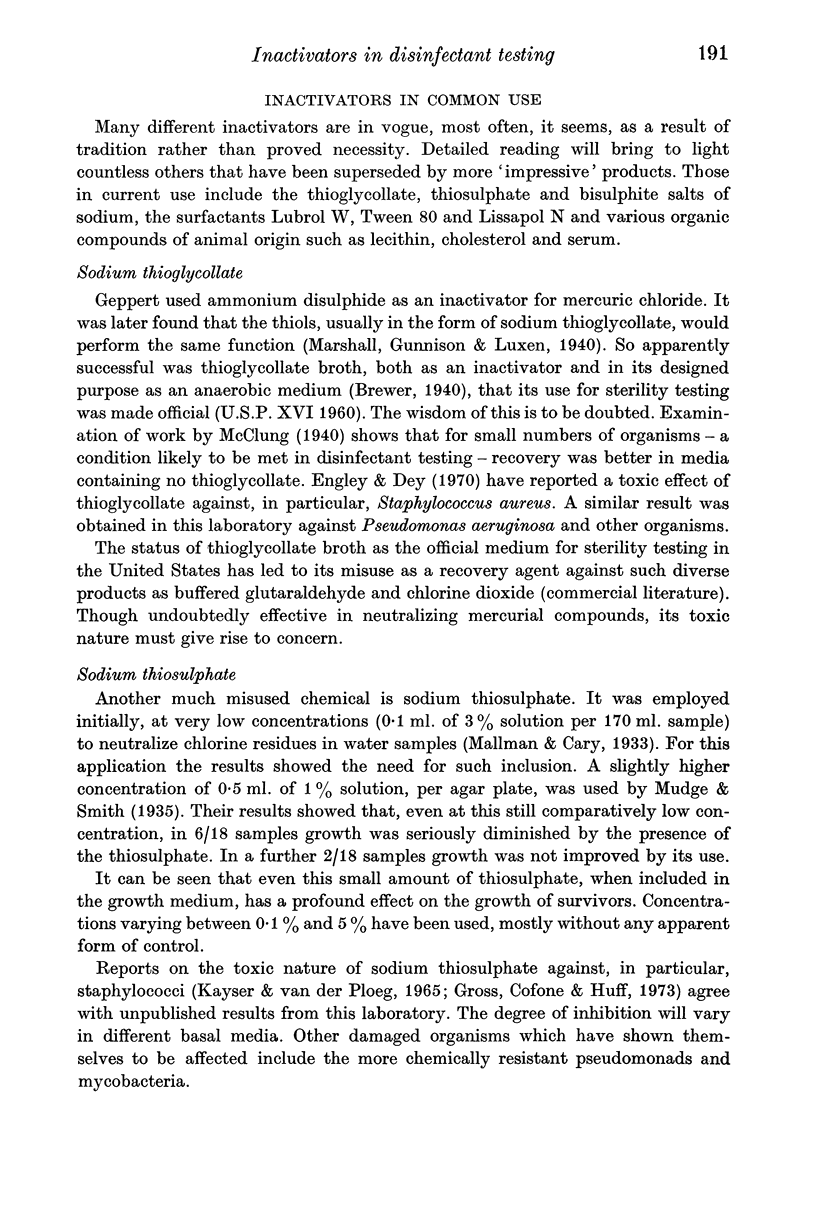
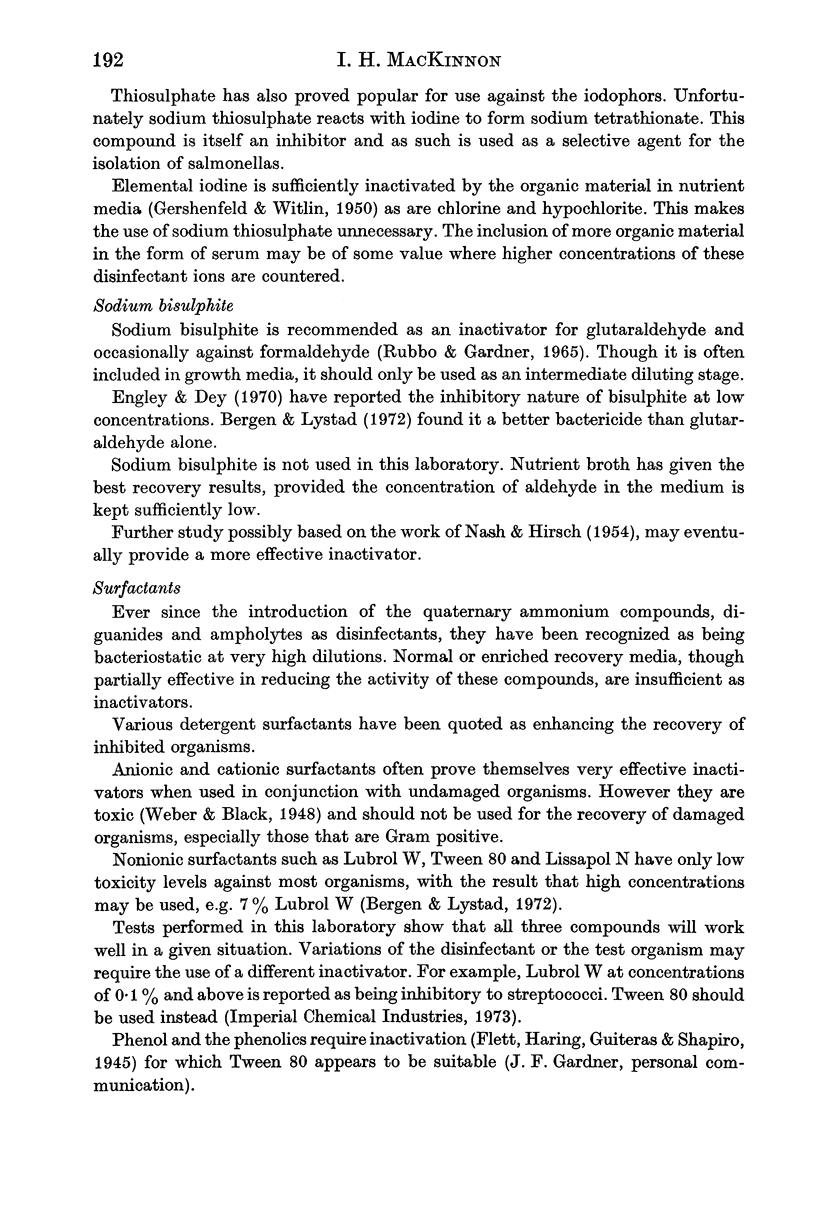
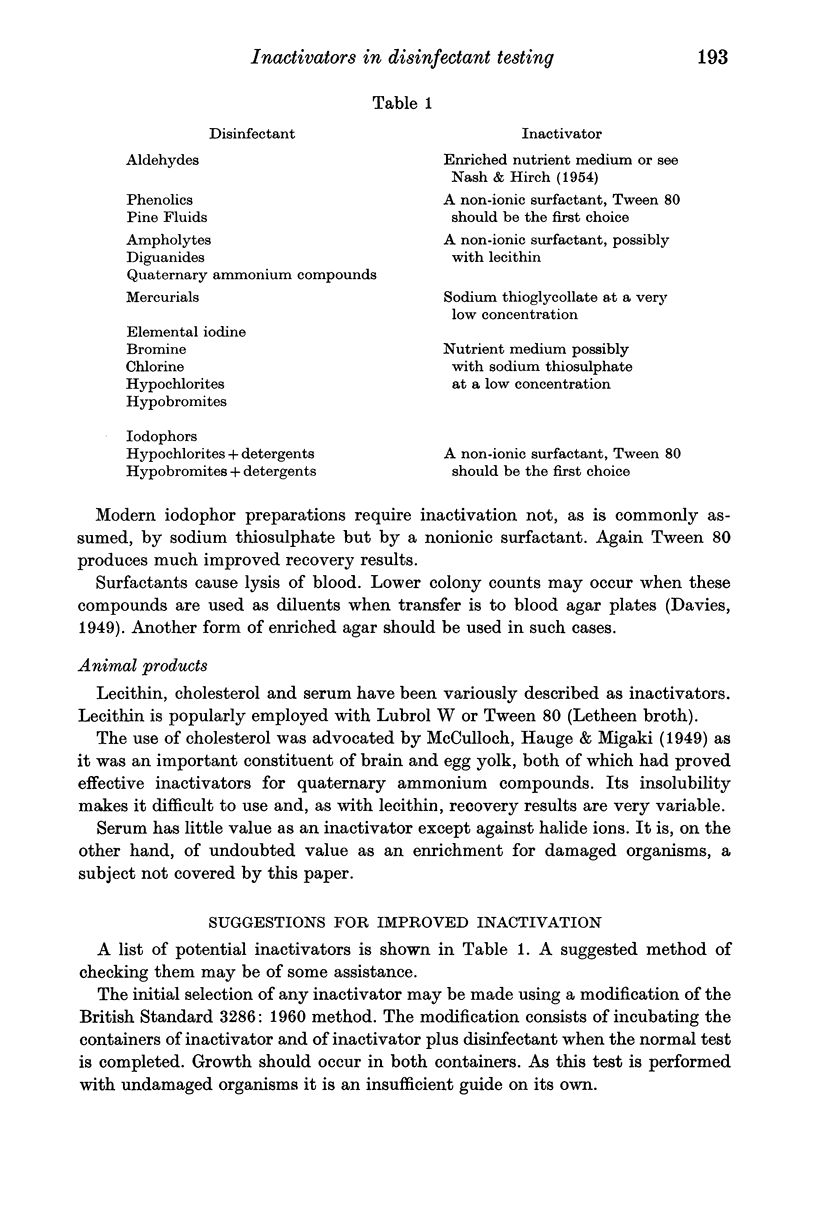
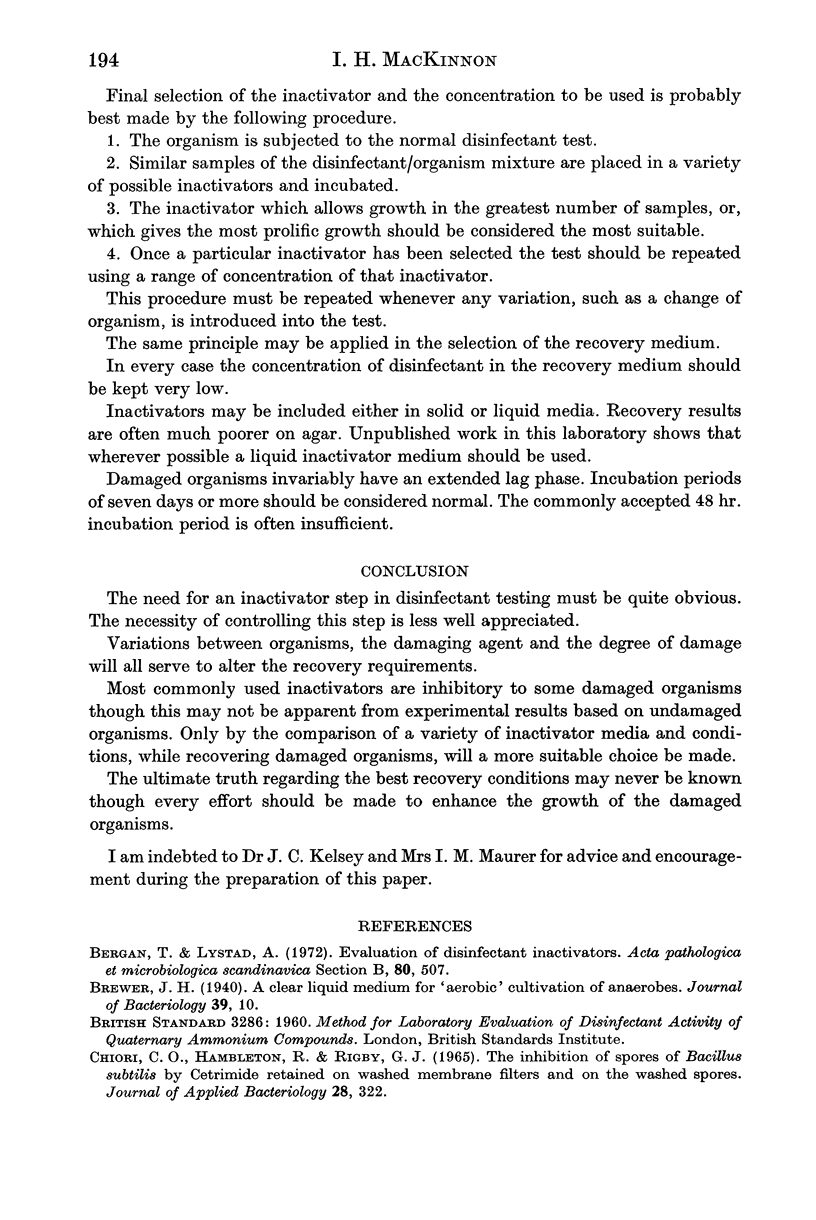
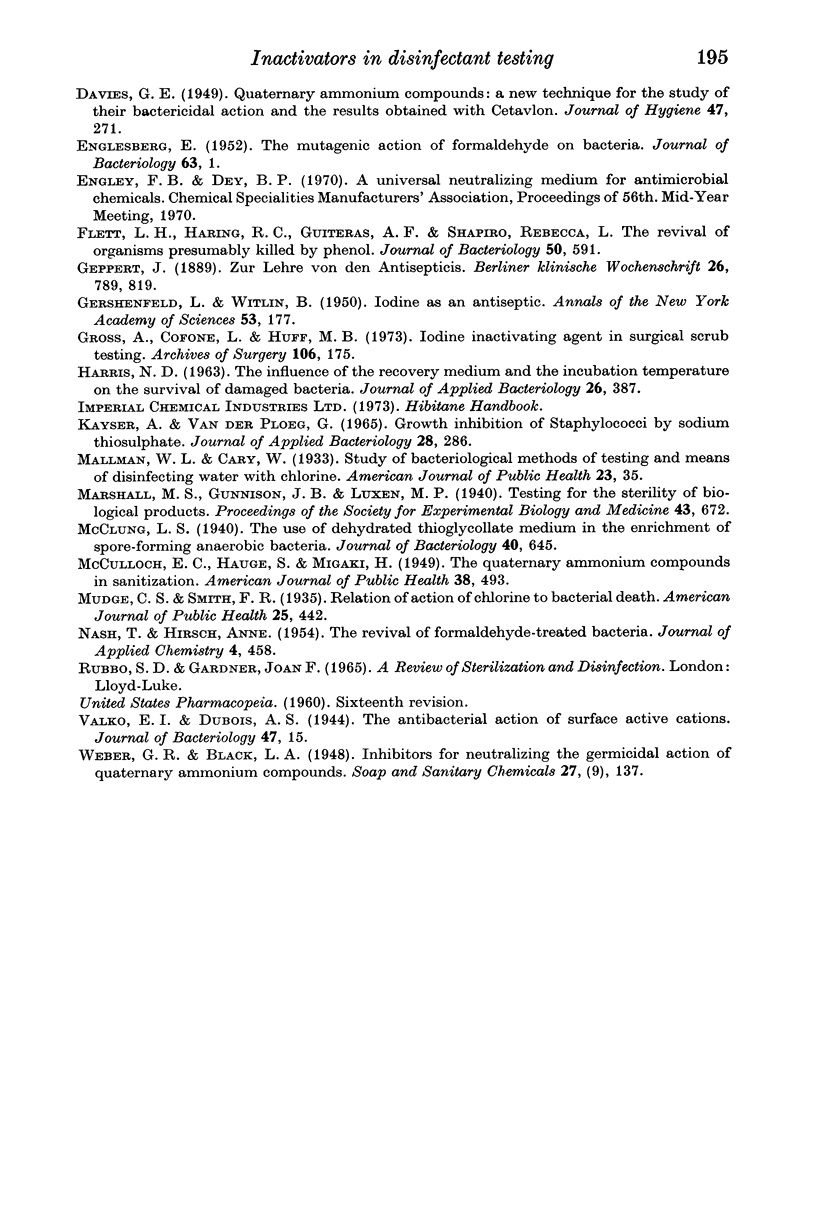
Selected References
These references are in PubMed. This may not be the complete list of references from this article.
- Bergan T., Lystad A. Evaluation of disinfectant inactivators. Acta Pathol Microbiol Scand B Microbiol Immunol. 1972;80(4):507–510. doi: 10.1111/j.1699-0463.1972.tb00173.x. [DOI] [PubMed] [Google Scholar]
- Chiori C. O., Hambleton R., Rigby G. J. The inhibition of spores of Bacillus subtilis by cetrimide retained on washed membrane filters and on the washed spores. J Appl Bacteriol. 1965 Aug;28(2):322–330. doi: 10.1111/j.1365-2672.1965.tb02160.x. [DOI] [PubMed] [Google Scholar]
- DAVIES G. E. Quaternary ammonium compounds; a new technique for the study of their bactericidal action and the results obtained with cetavlon (cetyltrimethylammonium bromide). J Hyg (Lond) 1949 Sep;47(3):271–277. doi: 10.1017/s0022172400014583. [DOI] [PMC free article] [PubMed] [Google Scholar]
- ENGLESBERG E. The mutagenic action of formaldehyde on bacteria. J Bacteriol. 1952 Jan;63(1):1–11. doi: 10.1128/jb.63.1.1-11.1952. [DOI] [PMC free article] [PubMed] [Google Scholar]
- Flett L. H., Haring R. C., Guiteras A. F., Shapiro R. L. The Revival of Organisms Presumably Killed by Phenol. J Bacteriol. 1945 Nov;50(5):591–595. [PMC free article] [PubMed] [Google Scholar]
- Gross A., Cofone L., Huff M. B. Iodine inactivating agent in surgical scrub testing. Arch Surg. 1973 Feb;106(2):175–178. doi: 10.1001/archsurg.1973.01350140037012. [DOI] [PubMed] [Google Scholar]
- Kayser A., van der Ploeg G. Growth inhibition of staphylococci by sodium thiosulphate. J Appl Bacteriol. 1965 Aug;28(2):286–293. doi: 10.1111/j.1365-2672.1965.tb02156.x. [DOI] [PubMed] [Google Scholar]
- Mallmann W. L., Cary W. Study of Bacteriological Methods of Testing and Means of Disinfecting Water with Chlorine: With Particular Reference to Swimming Pool Water. Am J Public Health Nations Health. 1933 Jan;23(1):35–44. doi: 10.2105/ajph.23.1.35. [DOI] [PMC free article] [PubMed] [Google Scholar]
- McCULLOCH E. C., HAUGE S., MIGAKI H. The quaternary ammonium compounds in sanitization. Am J Public Health Nations Health. 1948 Apr;38(4):493–503. doi: 10.2105/ajph.38.4.493. [DOI] [PMC free article] [PubMed] [Google Scholar]
- McClung L. S. The Use of Dehydrated Thioglycollate Medium in the Enrichment of Spore-Forming Anaerobic Bacteria. J Bacteriol. 1940 Nov;40(5):645–648. doi: 10.1128/jb.40.5.645-648.1940. [DOI] [PMC free article] [PubMed] [Google Scholar]
- Mudge C. S., Smith F. R. Relation of Action of Chlorine to Bacterial Death. Am J Public Health Nations Health. 1935 Apr;25(4):442–447. doi: 10.2105/ajph.25.4.442. [DOI] [PMC free article] [PubMed] [Google Scholar]
- Valko E. I., Dubois A. S. The Antibacterial Action of Surface Active Cations. J Bacteriol. 1944 Jan;47(1):15–25. doi: 10.1128/jb.47.1.15-25.1944. [DOI] [PMC free article] [PubMed] [Google Scholar]


